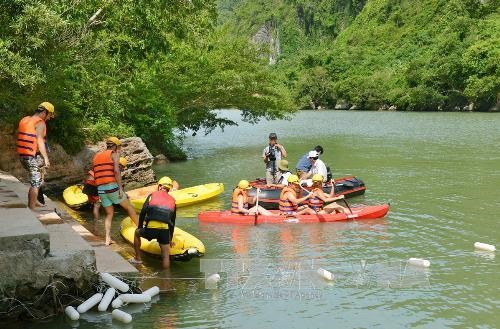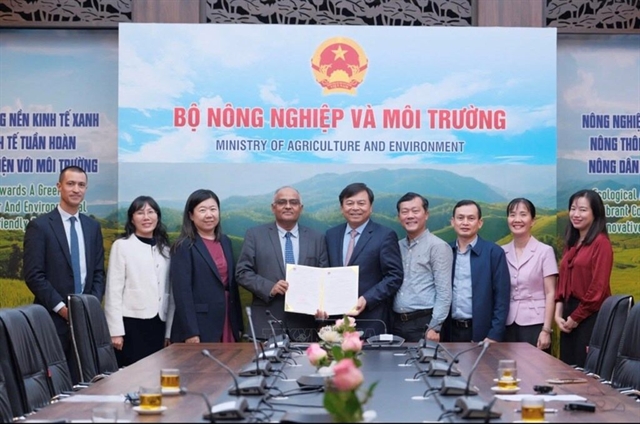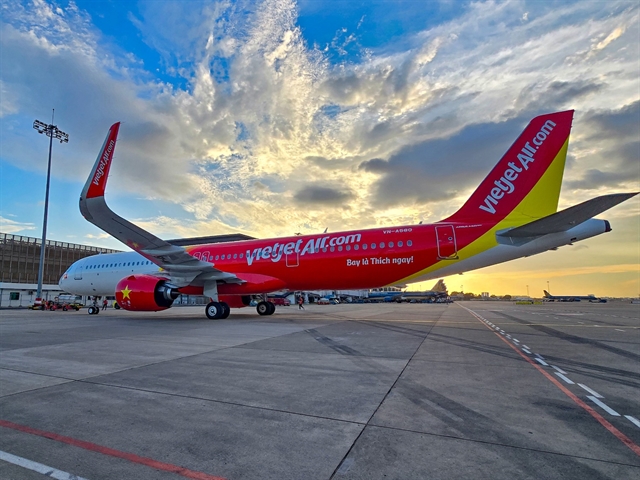 Society
Society

Public tourism management authorities should not be wary of tourism investors but closely collaborate with them in environmental preservation, said Dr Nguyễn Hoàng Trí, secretary of the National Committee for UNESCO’s Man and the Biosphere Programme (MAB) in Việt Nam.
 |
| Tourists go kayaking on Chày River in the Phong Nha – Kẻ Bàng National Park in Quảng Bình Province. — VNA/VNS Photo |
HÀ NỘI — Instead of being wary about investors, tourism management authorities should collaborate with them in preserving the natural environment, says Dr Nguyễn Hoàng Trí, Secretary of the National Committee for UNESCO’s Man and the Biosphere Programme (MAB) in Việt Nam.
With about 2.3 million hectares of special use forests (SUF), 31 national parks and 68 natural reserves, and dozens of other forests, Việt Nam is seen as a prime eco-tourism destination.
However, rapid and haphazard development of tourism infrastructure in natural reserves and SUFs in the last few years has raised concerns that development was taking place at the expense of the environment.
Tourism inside and around protected areas like the Phong Nha – Kẻ Bàng and Bạch Mã national parks, as well as the Sơn Trà and Lung Ngọc Hoàng natural reserves, has also raised concerns over the loss of biodiversity.
Ways to address these concerns and preserve the nation’s natural environment in the context of an eco-tourism boom were discussed at a conference held in Hà Nội on Wednesday.
Most tourism projects in the country are implemented without conducting comprehensive environmental impact assessments (EIA), said Dr Lê Hoàng Lan of the Việt Nam Association for Conservation of Nature and Environment. The result is that the risks and consequences that the projects can have on the environment are not accounted for, she said.
Current regulations only require tourism investors to address damage caused to forests by paying money or replanting trees, “but such losses can’t be measured with money, like losing rare animals like rhinos,” Lan said.
“Re-growing forests does not ensure recovery of biodiversity,” she said, adding that regulations should require investors to restore biodiversity in damaged areas.
Overlaps and loopholes in laws and regulations on natural resource management have complicated the task of preserving biodiversity in the country, public policy specialist Nguyễn Quang Đồng said at the conference.
For example, the 2010 decree on SUF management actually allows investors to engage in activities forbidden by the Law on Forest Protection and Management, he said.
Both the environmental and agricultural ministries have their own guidelines on planning natural reserves for tourism, which are too many, unstructured, and too complicated, he added.
“They need to redefine their functions and untangle this management mess,” he said.
Dr Nguyễn Quốc Dựng of the Institute of Investigation and Forest Planning, said that management of national parks has been arbitrarily decentralised in some localities.
Instead of being managed by the provincial People’s Committees as regulated, some national parks are being administered by lower-level agricultural and forest protection departments, he said.
Dr Nguyễn Hoàng Trí, secretary of the National Committee for MAB Việt Nam, said that the private sector, particularly tourism investors, should not be excluded from the policy making process.
“Tourism is an important sector for economic development, and it should be encouraged to grow,” he said.
“Since private investors have their own perspectives on tourism, public management agencies and policy makers should not be ‘scared’ of them, but instead engage them in dialogues and collaborate with them in the task of environmental protection,” he added.
Other experts proposed a comprehensive review and evaluation of environmental preservation and development in the last two decades, so that a more effective legal foundation can be laid for eco-tourism development.
“The carrying capacity of facilities at eco-tourism sites, and the monetary value of biodiversity loss caused by eco-tourism, are the two most difficult factors to evaluate,” said Nguyễn Việt Dũng, deputy director of the Center for People and Nature. — VNS




